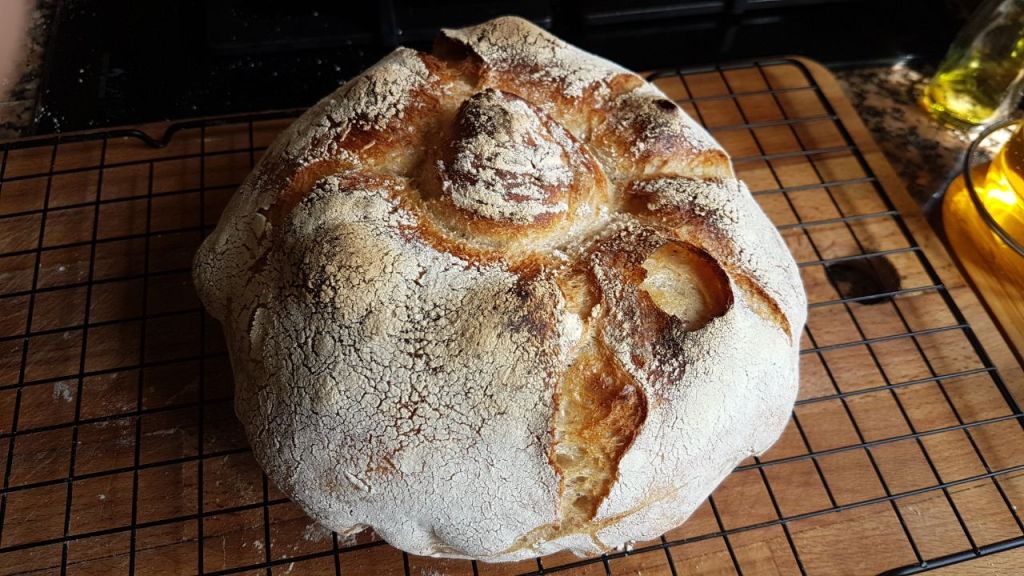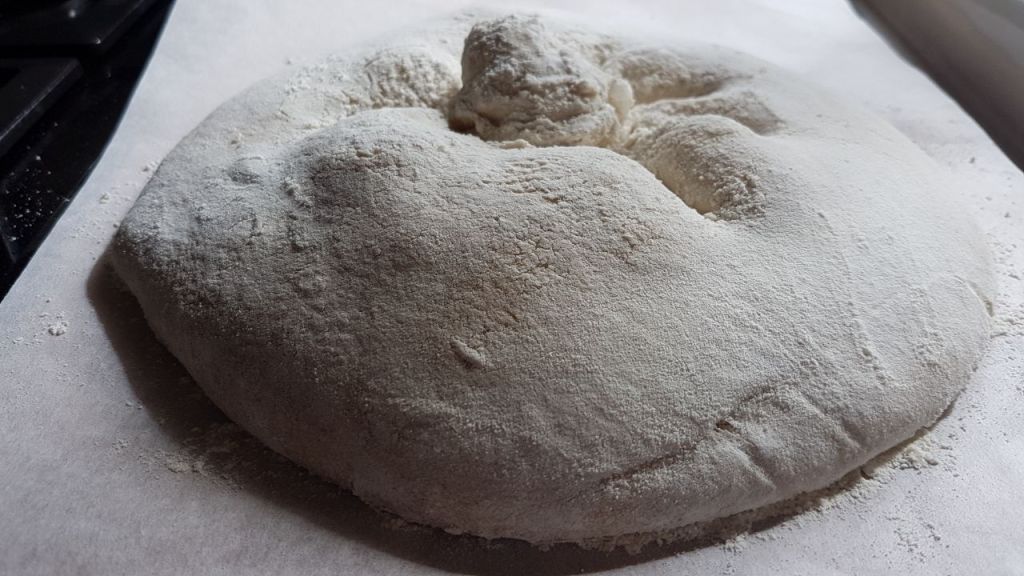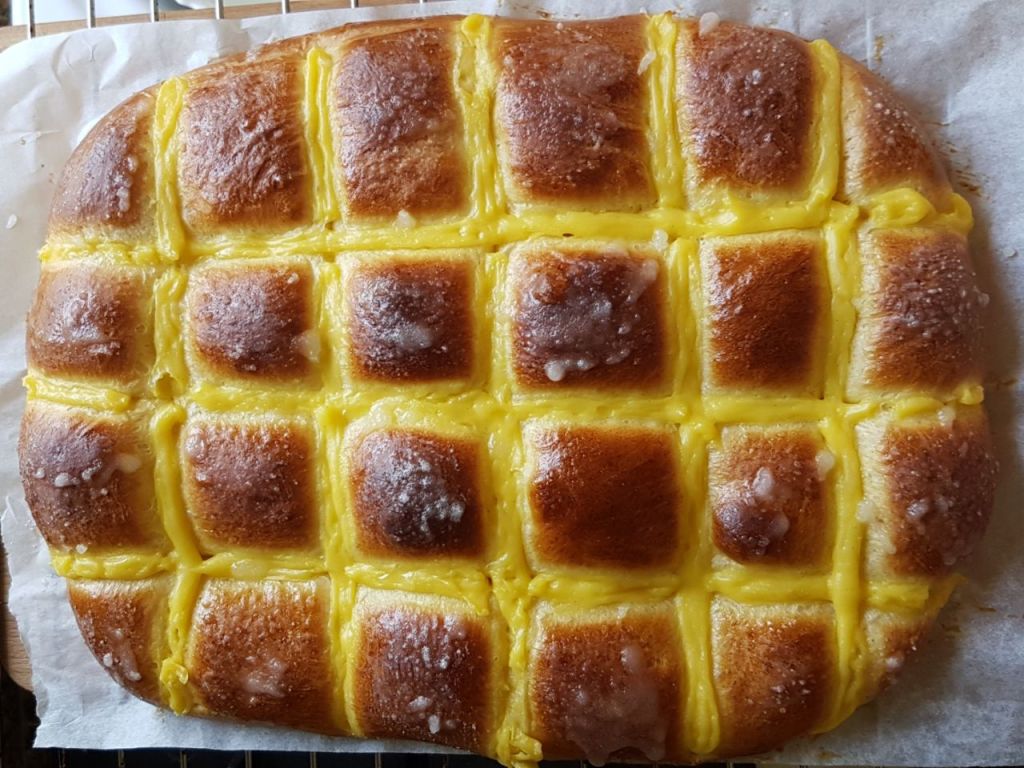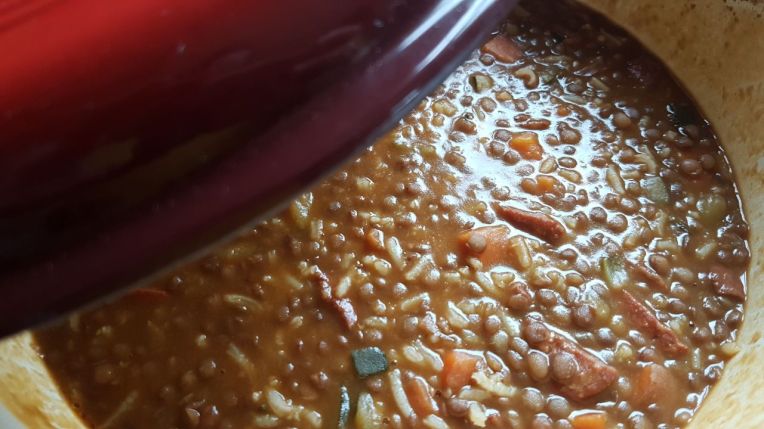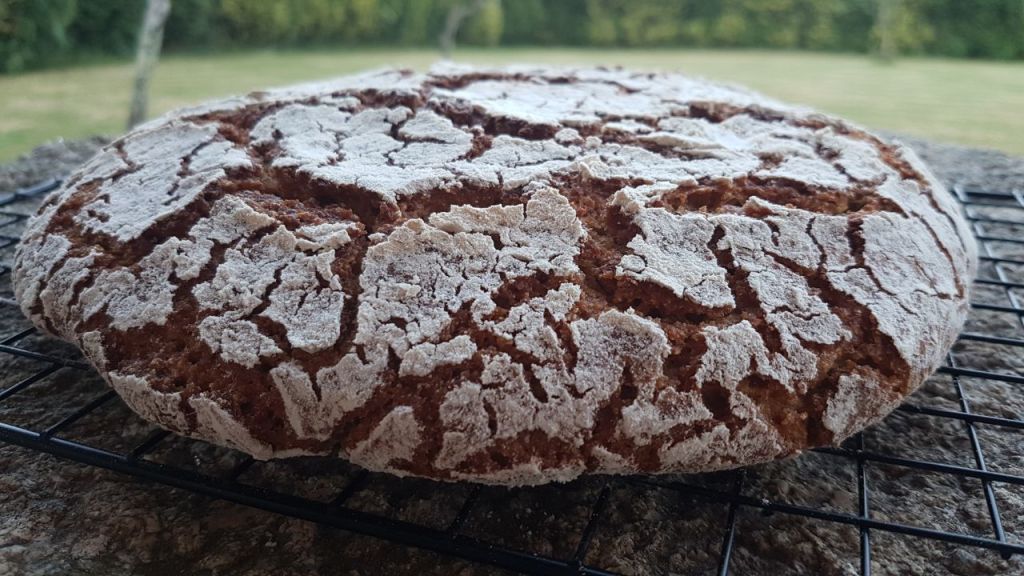The top bun of the molete is the distinctive sign of this Galician bread (and also the most difficult part to create). After much trying, I came to the conclusion that there are two techniques that help us get a good bun without damaging our bread and without having to do pizzaiolo moves.
| Technique 1: Pinch the centre of the dough firmly from the bottom. Then turn the dough several times until the bun is tight. Technique 2: Pinch the centre of the dough firmly from the bottom. Pull up on the pinched piece of dough (careful not to break it) and make a knot. |
| Ingredients: |
• 390 ml. lukewarm water.
• 375 g. strength flour.
• 45 g. rye flour.
• 10 g. of salt.
• 80 g. sourdough.
| Steps to follow: |
• Put the flours in a large bowl that allows you to work the dough.
• Incorporate the water and mix well until there is no dry flour left.
• Autolysis period for 30 minutes.
• Add the sourdough. Let prove for 20 minutes.
• Add salt and incorporate well into the dough.
• Let prove for 30 minutes.
• Bulk fermentation for 4 hours. Stretch and fold every 30 minutes.
• As soon as bulk fermentation ends, flour the work table and place the dough on top.
• Let stand 30 minutes.
• Preform the loaf and leave it in a floured banetton.
• Refrigerate from 12 to 16 hours or overnight.
• Heat the oven to 250 degrees Celsius with a Dutch oven inside.
• Shape the bun following the knot or twist technique.
• Bake for 30 minutes with the lid on and another 10 minutes with the lid off.
• Let cool on a rack 1 hour before devouring it!

